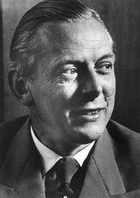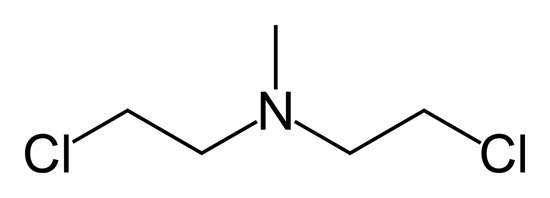April 27th, 2008 · Comments Off on Chemical Composition ·
Introduction Chemical Composition History affects Chocolate: Spread and Innovation Chocolate Affects History: Economics Chocolate Affects History: Health Benefits Chocolate Affects History: Pop Culture
Theobromine


3,7-dihydro-3,7-dimethyl-1H-purine-2,6-dione
Theobromine is a methylxanthine or mild stimulant that is similar to caffeine and occurs naturally in cocoa beans. It has less impact on the central nervous system than caffeine but more on the heart. Interestingly, the structure contains no bromine. Instead, the name comes from the name of the Theobroma cacao tree. Theobroma roughly translates to “food of the gods.”
Theobromine was first isolated from cacao in 1878 and was synthesized from xanthine by German chemist Hermann Emil Fischer who won the Nobel Prize for Chemistry in 1902.
The concentration of theobromine varies based on the type of chocolate. Hershey’s cocoa powder contains 2.16% of theobromine. Dark chocolate and semi-sweet chocolate contain more and pure cocoa extract can contain up to 10%.
A combination of theobromine and some other chemicals in chocolate have been shown to affect serotonin levels in the brain. A recent study shows that eating chocolate stimulates brain activity and heart rate more than kissing.
The theobromine in chocolate can lead to poisoning in animals such as dogs and cats because they can’t metabolize it fast enough.
Other chemicals: Chocolate also contains small amounts of anandamide, which has been shown to bind to the same receptor in the brain as THC (marijuana) Chocolate also contains phenylethylamine which increases dopamine and could possibly treat depression.
Categories: Chocolate (Theobromine)
Tags: Sarah Hutson —
April 27th, 2008 · 8 Comments ·
Introduction Chemical Composition History affects Chocolate: Spread and Innovation Chocolate Affects History: Economics Chocolate Affects History: Health Benefits Chocolate Affects History: Pop Culture

Warning: This presentation may cause chocolate cravings
Chocolate is one of the most craved substances on Earth and has many different chemical qualities and claimed health benefits.

Chocolate comes from the cocoa beans from the Theobroma cacao tree, which originates in South America.
There are approximately 300 different chemicals and compounds that make up chocolate, some of which are thought to have beneficial effects on the human body.
Chocolate’s popularity as a result of its chemical structure has affected history in a variety of ways.
Categories: Chocolate (Theobromine)
Tags: Sarah Hutson —
April 25th, 2008 · 1 Comment ·
Back to Intro
Chemistry of Testosterone Discovery and Synthesis Historical Significance
Anabolic Steroids
References
Steroids in professional sports
-congressional hearings
-asterisks in the record books
-who to blame?
Impact on the youth
-role models
-high school use
Medicinal Use
Categories: Testosterone
Tags: Eric Dube —
April 25th, 2008 · Comments Off on Androgen Receptor ·
Back to Chemistry of Testosterone
The main function of the androgen receptor is to transcribe DNA into m(essenger)RNA which regulates gene expression.

Categories: Testosterone
Tags: Eric Dube —
April 25th, 2008 · 2 Comments ·
Stacking Increases the Likelihood of Acne

Back to Anabolic Steroids
Categories: Testosterone
Tags: Eric Dube —
Categories: Testosterone
Tags: Eric Dube —
April 25th, 2008 · 9 Comments ·
Introduction to Testosterone Chemistry of Testosterone Future
Historical Significance Discovery and Synthesis
References

-Scientists in the 1930s discovered that anabolic steroids could facilitate the growth of skeletal muscle in laboratory animals
-This breakthrough led to abuse of these compounds by bodybuilders and weightlifters and then by athletes in other sports.
Adminstering Anabolic Steroids
-orally, injected intramuscularly, or rubbed on the skin when in the form of gels or creams
-these drugs are often used in patterns called cycling, which involves taking multiple doses of steroids over a given time period, stopping for a period, and then beginning again.
-Users combine several different types of steroids in a process known as stacking; the belief is that a variety of steroids will produce an effect on muscle size that is greater but side effects will be decreased
-pyramidding an another common practice in which the user takes the highest level of steroid in the middle of a cycle and then decreases servings towards the end of the cycle
The effects
- ability to train harder.
- build muscle mass.
- help cut down on recovery time after strenuous exercise
Addictive Nature
-User can become psychologically dependent long before he or she becomes physically dependent
-Withdrawal symptoms including: headaches, lethargy and depression are common
Steroid Law
-Anabolic steroids are Class C drugs that can only be prescribed by a doctor.
-Importation of steroids is legal as long as they are only for personal use
-Importation with the intent to distribute is punishable by up to 14 years in prison
Categories: Testosterone
Tags: Eric Dube —
April 25th, 2008 · Comments Off on Butenandt and Ruzicka ·


Ruzicka Butenandt
Butenandt and G. Hanisch published a paper describing “A Method for Preparing Testosterone from Cholesterol.”
Ruzicka and A. Wettstein, announced a patent application in a paper “On the Artificial Preparation of the Testicular Hormone Testosterone.”
Their independent partial syntheses of testosterone from a cholesterol base earned Butenandt and Ruzicka each a share of the 1939 Nobel Prize for Chemistry.
Back
Categories: Testosterone
Tags: Eric Dube —
April 25th, 2008 · Comments Off on Taking the Next Step: More Sources on Mustard Gas ·
Categories: Mustard Gas
Tags: Elizabeth Gorenbergh —
April 25th, 2008 · 1 Comment ·
Categories: Mustard Gas
Tags: Elizabeth Gorenbergh —












